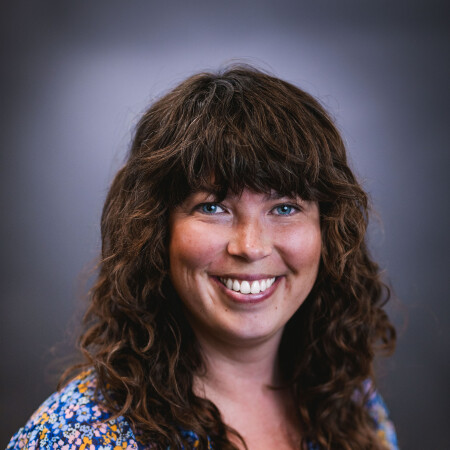NSF EAR Postdoctoral Researcher - Geosciences
Brown University - 2023

Kristina Butler
Assistant Professor
I am a sedimentary geologist and geochemist researching sediment- and brine-hosted critical mineral deposits, the tectonic evolution of sedimentary basins, and terrestrial depositional systems and hydroclimate records.
Professional Preparation
PhD - Geosciences
The University of Texas at Austin - 2022
The University of Texas at Austin - 2022
BS - Geosciences
The University of Alaska Anchorage - 2017
The University of Alaska Anchorage - 2017
Research Areas
Critical Mineral Resources
I study brine- and sediment-hosted critical mineral resources in sedimentary basins around the world. Currently I am working on lithium brine systems in the Salar de Atacama, Chile and Clayton Valley, Nevada as well as several new projects in oil field lithium-rich brines and lithium rich clays around North and South America.Tectonic Evolution of Sedimentary Basins
I use the sedimentary record to understand how mountains and their basins formed through time. Currently I am working on the surface elevation history and uplift mechanisms of the Central Andes (Atacama Desert) and the earliest phase of Cretaceous Andean mountain building in Patagonia.Closed Basin Systems
I use sedimentary materials to reconstruct past surface environment conditions such a temperature, water chemistry, depositional systems, and elevation. Currently I am working on Miocene-recent sediments in the Central Andes and in the Southwestern US.Publications
The origin and enrichment of sedimentary basin lithium brines: a case study from the Devonian Leduc Formation, Alberta Basin, Canada. Butler, K.L., Munk, L.A., Boutt, D.F., Morris, N., Kennedy, J., Saha, P., Blake, M.R., Custado, M.J., Ibarra, D.E., Economic Geology. 2025 - Journal Article
Volcano-sedimentary lithium occurrences in Barstow, CA and their related formation mechanisms gleaned from stable isotope analyses of carbonates and clays. Gagnon. C.A., Butler, K.L., Robertson, K., Emproto, C., Ganz, P., Eden, R., Ibarra, D.E., Benson, T.R., Economic Geology. 2025 - Journal Article
Lithium Brines: Origin, characteristics, and global distribution. Munk, L.A., Boutt, D., Butler, K.L., Russo, A., Jenckes, J., Moran, B., Kirshen, A., Economic Geology. 2025 - Journal Article
Volcano-Sedimentary Deposits: Overview of an Emergent Type of Lithium Resource. Putzolu, F., Armstrong, R.N., Benson, T.R., Boutt, D., Butler, K.L., Dolgopolova, A., Herrington, R.J., Ibarra, D.E., Munk, L.A., Economic Geology. 2025 - Journal Article
Pleistocene shifts in Great Basin hydroclimate seasonality govern the formation of lithium-rich paleolake deposits. Bhattacharya, T., Brennan, P.R., Ibarra, D.E., Gagnon, C.A., Butler, K.L., Terrazas, A., Miller, S., Munk, L.A., Boutt, D.F., Feng, R. and Bullinger, S.N., Quaternary Science Reviews. 2024 - Journal Article
Lithium Storage and Release From Lacustrine Sediments: Implications for Lithium Enrichment and Sustainability in Continental Brines. 2021 - Journal Article
Lithium storage and release from lacustrine sediments: Implications for lithium enrichment and sustainability in continental brines. Coffey, D.M., Munk, L.A., Ibarra, D.E., Butler, K.L., Boutt, D.F. and Jenckes, J. Geochemistry, Geophysics, Geosystems, 22(12), p.e2021GC009916. 2021 - Journal Article
Cretaceous-Cenozoic growth of the Patagonian broken foreland basin, Argentina: Chronostratigraphic framework and provenance variations during transitions in Andean subduction dynamics. Butler, K.L., Horton, B.K., Echaurren, A., Folguera, A. and Fuentes, F. Journal of South American Earth Sciences, 97, p.102242. 2020 - Journal Article